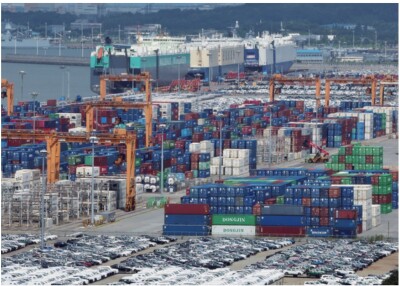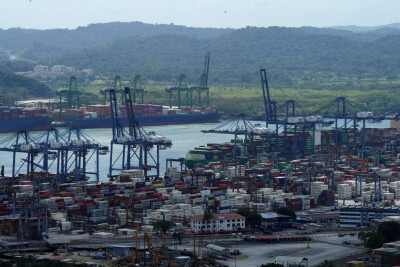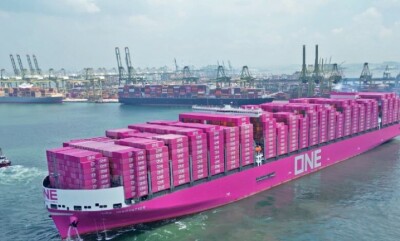China Ramps Up Exports to Vietnam Amid Transshipment Worries

Made in Vietnam (or China)
At a time when trade officials around the world are closely watching Vietnam’s evolving place in the global trading system, Chinese exports to the new Asian economic power in June boomed 23.8% year-on-year to $16.3 billion.
The U.S.-China trade war has pushed attention of U.S. trade negotiators toward manufacturing powers such as Vietnam, Singapore and Malaysia.
Vietnam has had a trade deal with the U.S. for over 20 years. The country is now the U.S.’s sixth biggest source of imports, after Mexico, Canada, China, Ireland, and Switzerland. Vietnam is actually the fifth biggest source if you take away gold shipments from Switzerland.
Earlier this month, President Trump announced a new trade deal with Vietnam that includes 20% tariffs on U.S. imports from the Asian country. With one exception: 40% tariffs on imports from Vietnam that are “transshipped” from China. That set off an effort by Vietnamese trade officials to certify which goods made in their country are in fact domestic and not repackaged Chinese fare.
With shipments from China increasing so fast, they’ll have their work cut out for them, especially as the economic relationship appears to be growing more one-sided: China’s imports from Vietnam in June shrank 13.4% year-on-year to $7.6 billion.
China’s Resilient Export Economy
The pressure of the trade war with the U.S. shows no signs of abating. Chinese negotiators now face an August 12 deadline to set new trade terms with the U.S.
Overall, Chinese exports in June rose 5.8% year-on-year to $325.2 billion. Beijing is successfully weathering the storm: Current duties on Chinese imports vary by product but are at an average of around 55%, according to a recent social media post by President Trump.
Exports to the U.S. fell 16.1% to $38.2 billion. However, that decline was lower than the fall in May, and it’s been counterbalanced by an increase in sales to other countries.
The rebound in trade with Europe appears significant. Exports to the European Union rose 7.6% to $49.2 billion. Shipments to Germany increased 3.6% to $10.1 billion. Exports to Italy and France both rose by double-digit figures. European countries stand to benefit from the loss of export markets in the U.S. Buyers there can snap up excess production that can’t find a home in the U.S., and benefit from lower prices.
Exports to Africa leapt 34.9% to $19.6 billion. Exports to ASEAN countries improved 17% to $58.2 billion. Exports to Brazil fell 8% to $6.1 billion.
The Russia Relationship
After Russia invaded Ukraine in 2022, Beijing and Moscow forged a close trade relationship, but that appears to be crumbling. Russia shipped raw materials to China, and bought electronics, especially for the war effort. But in June, exports to Russia declined 16.2% year-on-year to $8.3 billion. Imports from Russia fell 11.2% to $9.3 billion. To be sure, a big part of the decline can be attributed to the struggles of Russia’s economy.
Cars, Not Phones
China’s main casualty of the trade war might be smartphones. Exports of mobile phones fell 8.8% to $7.4 billion. However, overall exports of high-tech products rose 7.3% to $78.1 billion. The Chinese export economy appears increasingly geared toward high-tech industrial goods, especially cars. Exports of motor vehicles increased 23% to $10.8 billion. Exports of ships leapt 23.7% to $4.5 billion. Shipments of agricultural products declined 6.2% to $8.1 billion. Exports of suitcases, textiles and footwear all continued their decline.
The Chinese Economy
Concerns remain about Chinese demand and the country’s domestic economy. In June, total imports increased only 1% year-on-year to $210.4 billion.
Imports from the U.S. fell 14.8% to $11.6 billion. Imports from the EU, however, notched up 0.6% to $23.3 billion, another sign of Brussels taking a different tack toward China than Washington. Imports of agricultural products increased 2% to $18.5 billon. Imports of high-tech products increased 10% to $67.7 billion. Imports of integrated circuits rose 11.6% to $34.6 billion. Although purchases of crude petroleum and natural gas increased, imports of coal fell 25.8% to 33 million tons.
And, despite the success so far in withstanding pressure from the U.S., the Chinese economy will keep taking punches from the trade war. “Tariffs are likely to remain high and Chinese manufacturers face growing constraints on their ability to rapidly expand global market share by slashing prices,” wrote Capital Economics in a note. “We therefore expect export growth to slow over the coming quarters, weighing on economic growth.”
News

















